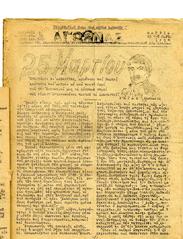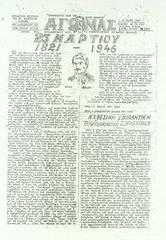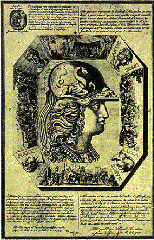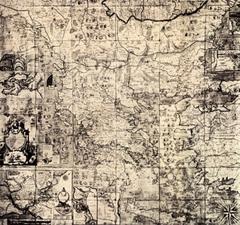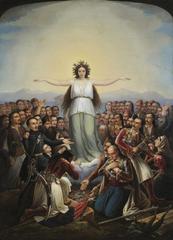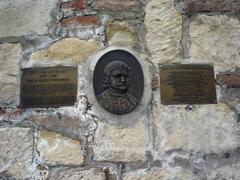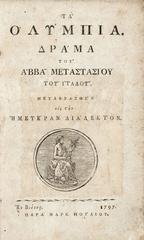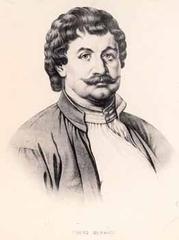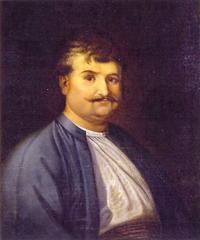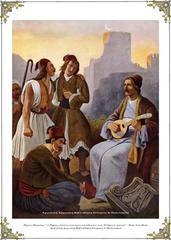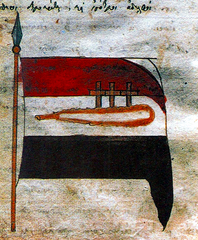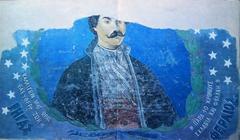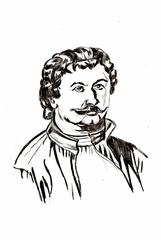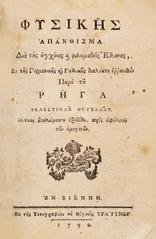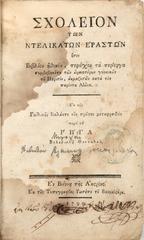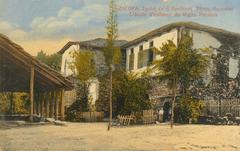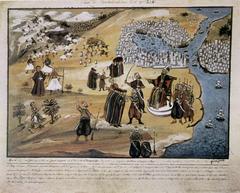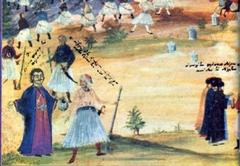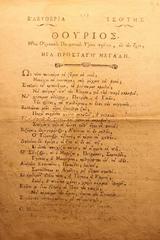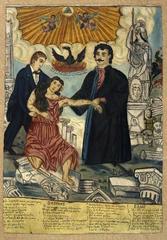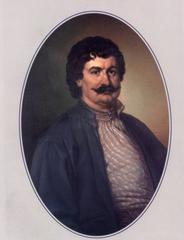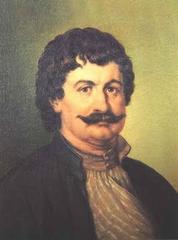
Statue of Rigas Velestinlis: Visiting Hours, Tickets, and Athens Historical Sites Guide
Date: 14/06/2025
Introduction to the Statue of Rigas Velestinlis in Athens
Nestled in the vibrant heart of Athens, the Statue of Rigas Velestinlis (Rigas Feraios) stands as a monumental tribute to one of Greece’s leading national heroes and intellectual pioneers. Rigas’s revolutionary ideas and writings played a formative role in igniting the Greek War of Independence and shaping the Modern Greek Enlightenment. His vision of freedom, equality, and a democratic Balkan federation continues to resonate in Greece’s cultural identity.
This guide provides detailed insights into the statue’s history, precise location, accessibility, practical visitor information, and recommendations for maximizing your experience. Additionally, it highlights nearby attractions and cultural sites for a comprehensive exploration of Athens’s heritage.
For further planning, refer to the University of Athens Historical Archive, the National Historical Museum, and travel features from Greek City Times.
Table of Contents
- Introduction
- Historical Background of Rigas Velestinlis
- The Statue: Creation, Artist, and Location
- Artistic and Symbolic Features
- Visiting Information: Hours, Location, and Tickets
- Accessibility
- Nearby Attractions
- Experiencing Rigas’s Legacy: Educational and Cultural Context
- Notable Inscriptions and Memorials
- Integration into the Urban Landscape
- Special Events and Tours
- Visuals and Media Suggestions
- Practical Visitor Information for Related Exhibits
- Frequently Asked Questions (FAQ)
- Recommendations for a Meaningful Visit
- Conclusion
- References
Historical Background of Rigas Velestinlis
Rigas Velestinlis (Rigas Feraios; 1757–1798), born in Velestino, Thessaly, was a pioneering figure in the Modern Greek Enlightenment and a seminal voice for liberation from Ottoman rule. His writings—including the famed “Thourios” war hymn and the visionary “Charta of Greece” (1796–1797)—inspired Greeks and Balkan peoples to dream of freedom and equality (Academia.edu, Greek Herald). After being executed in 1798 for his revolutionary activities, Rigas became an enduring symbol of martyrdom and hope (Greek Reporter).
The Statue: Creation, Artist, and Location
Commissioned in 1869 and unveiled in 1871, the marble statue was created by Ioannis Kossos, a prominent Greek sculptor. It stands in the courtyard of the National and Kapodistrian University of Athens at 30 Panepistimiou Street, in front of the Propylaea (University of Athens Historical Archive, Greek City Times).
As the first statue erected after Athens became Greece’s capital, it symbolizes the city’s intellectual revival and commitment to freedom. The statue’s dynamic pose, with an outstretched arm and resolute gaze, visually encapsulates Rigas’s ideals.
Artistic and Symbolic Features
Crafted from marble, the statue features Rigas Velestinlis in an expressive stance, right arm extended, symbolizing leadership and vision. Broken chains at his feet represent liberation from oppression. The pedestal bears an inscription by Professor Filippos Ioannou:
«ΣΠΕΡΜΑΤ ΕΛΕΥΘΕΡΙΗΣ Ο ΦΕΡΑΙΟΣ ΣΠΕΙΡΕΝ ΑΟΙΔΟΣ ΚΑΙ Ο ΜΕΝ ΩΛΕΤΟ ΦΕΥ ΣΠΕΡΜΑ Δ ΕΒΛΑΣΤΕ ΜΕΓΑ»
(“Feraios the poet has sown a seed of freedom, he perished but the seed flourished”)
(Poetry Homoludens).
The neoclassical style harmonizes with the University and the adjacent Academy and National Library—collectively known as the “Athenian Trilogy” (Nomadic Matt).
Visiting Information: Hours, Location, and Tickets
Location: National and Kapodistrian University of Athens, 30 Panepistimiou St., Athens, Greece (Poetry Homoludens).
Nearest Metro: Panepistimio Station (Line 2, Red Line), a short walk from the statue.
- Visiting Hours: Open-air plaza, accessible 24/7.
- Admission: Free; no tickets required.
- Best Times to Visit: Early morning or late afternoon for optimal lighting and fewer crowds (Kimkim).
Safety Tips:
Central Athens is generally safe, but be mindful of pickpockets in busy tourist areas (Dave’s Travel Pages). Photography is encouraged.
Accessibility
The courtyard is fully wheelchair accessible, with level walkways and ramps. If you require additional assistance, contact the University in advance for support (militarytourism.warmuseum.gr).
Nearby Attractions
- Athenian Trilogy: University, Academy of Athens, and National Library (Nomadic Matt).
- Syntagma Square: Central square with the Greek Parliament and changing of the guard.
- Plaka and Monastiraki: Historic neighborhoods with shops, cafes, and ancient ruins.
- National Historical Museum: Home to original artifacts and the “Charta of Greece” (National Historical Museum).
Experiencing Rigas’s Legacy: Educational and Cultural Context
The statue is a focal point for civic and educational activities. The University hosts exhibitions and commemorative events, especially on significant anniversaries such as Rigas’s martyrdom. The National Historical Museum’s exhibits offer original documents and interactive displays on Rigas’s life, the Modern Greek Enlightenment, and the Greek War of Independence.
Notable Inscriptions and Memorials
The statue’s pedestal inscription, referencing the “seed of freedom,” echoes Rigas’s last words:
“I have sown a bountiful seed; the hour is approaching when my nation will enjoy its wonderful fruits.”
(Greek Herald)
Integration into the Urban Landscape
This monument is part of Athens’s extensive network of sites honoring the heroes of the Greek Revolution and Enlightenment. Its neoclassical form complements the city’s architectural heritage, inviting daily engagement with Greece’s historical narrative (Greek City Times).
Special Events and Tours
- Commemorative Events: Held on June 24th and during national holidays, featuring speeches and performances.
- Guided Tours: Available through local tour operators and the National Historical Museum. Book in advance for multilingual options.
Visuals and Media Suggestions
Capture the statue from varying angles, highlighting its marble details and the University courtyard. Consider alt text such as “Statue of Rigas Velestinlis at University of Athens courtyard” for image optimization. Interactive maps and 360-degree images can further enhance visitor engagement.
Practical Visitor Information for Related Exhibits
National Historical Museum (Old Parliament House, Kapnikareas 10, Athens):
- Hours: Tuesday–Sunday, 9:00 AM – 5:00 PM; closed Mondays and public holidays
- Admission: €8 general, €4 reduced; free for children under 18 and seniors
- Accessibility: Fully wheelchair accessible
- Tours: Multilingual guided tours available by appointment
More details at the National Historical Museum’s official website.
Frequently Asked Questions (FAQ)
Q: Is there an entry fee to visit the statue?
A: No, the statue is free and open to the public.
Q: What are the visiting hours?
A: The statue is accessible 24/7 as it is in an open public space.
Q: Is the site wheelchair accessible?
A: Yes, the courtyard and statue area are fully accessible.
Q: Are guided tours available?
A: Yes, through local operators and the National Historical Museum.
Q: What’s the best time to visit?
A: Early morning or late afternoon for optimal lighting and fewer crowds.
Recommendations for a Meaningful Visit
- Combine your visit with a walk through the Athenian Trilogy and historic neighborhoods.
- Attend commemorative events for a deeper cultural experience.
- Read the pedestal inscription and reflect on Rigas’s message of liberty.
- Support nearby local businesses and maintain the site’s cleanliness.
Internal Links
Explore our other resources:
Conclusion
The Statue of Rigas Velestinlis is a powerful emblem of Greece’s journey toward freedom and enlightenment. Its central location, artistic significance, and open access make it an essential destination for anyone exploring Athens’s historical and cultural landscape. Pair your visit with nearby landmarks and museums for a comprehensive appreciation of Greece’s rich heritage.
Stay updated and enhance your visit by downloading the Audiala app for guided audio tours. Follow us on social media for current events, travel tips, and in-depth stories about Athens’s vibrant past.
References
- Wikipedia: Rigas Feraios
- Britannica: Rigas Velestinlis
- Impactalk: Rigas Velestinlis – Revolutionary Thinker
- University of Athens Historical Archive
- Greek City Times
- Poetry Homoludens
- Nomadic Matt
- Kimkim
- Greek Reporter
- National Historical Museum
- Military Tourism Portal

